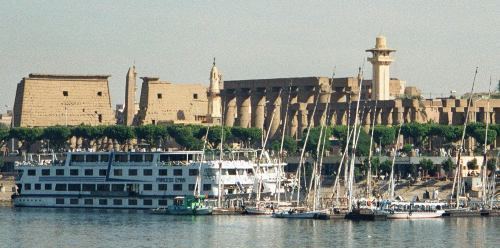Opened 1997 | Phone +20 95 2370062 | |
 | ||
Hours Open today · 10AM–11PMTuesday10AM–11PMWednesday10AM–11PMThursday10AM–11PMFriday3–11PMSaturday10AM–11PMSunday10AM–11PMMonday10AM–11PMSuggest an edit Similar Luxor Museum, Ramesseum, Tombs of the Nobles, Medinet Habu, Colossi of Memnon | ||
Egypt 332 mummification museum luxor i by egyptahotep
The Mummification Museum is an archaeological museum in Luxor, Upper Egypt. It is dedicated to the art of Ancient Egyptian mummification.
Contents
- Egypt 332 mummification museum luxor i by egyptahotep
- The mummification museum
- Location
- Aim
- History
- Halls
- References
The mummification museum
Location
The museum is located in the city of Luxor, the ancient Thebes. It stands on the corniche in front of the Mina Palace Hotel, situated to the north of the Luxor Temple overlooking the Nile river.
Aim
The museum is intended to provide visitors with an understanding of the ancient art of mummification. The Ancient Egyptians applied embalming techniques to many species, not only to dead humans. Mummies of cats, fish and crocodiles are on display in this unique museum, where one can also get an idea of the tools used.
History
The story of this museum began when the Egyptian president decreed that the responsibility of the former visitor centre building was to be transferred from the tourism ministry to that of culture (and, specifically, the Supreme Council of Antiquities). It was opened by President Hosni Mubarak in 1997.
Halls
The museum, located in the former visitor center, covers an area of 2035 m² and contains the following elements:
The hall of artifacts is divided into two parts, the first one is ascended corridor through which the visitor could have a look on ten tablets were drawn from the papyri of Ani and Hu-nefer that displayed in the British Museum in London. Most of these tablets throw lights on the funeral journey from death to burial. The second part of the museum began from the end of the corridor and the visitor could see more than sixty pieces, which are displayed in 19 well-advanced cases.
In those 19 display cases, the artefacts are concentrated on eleven topics:
